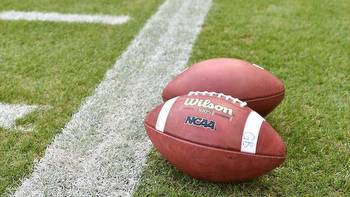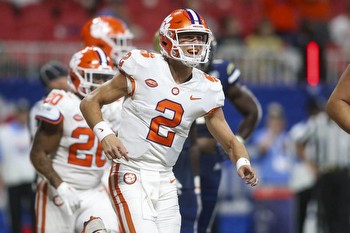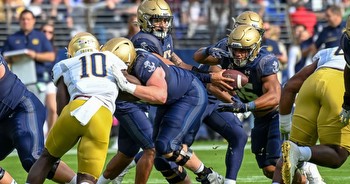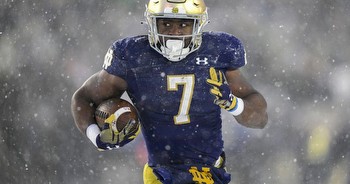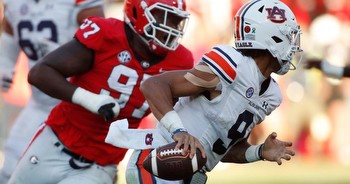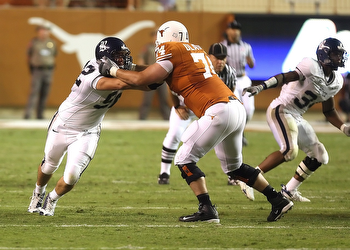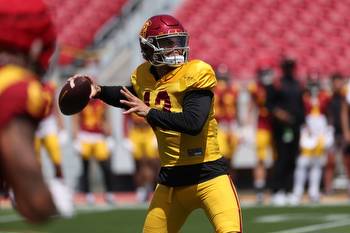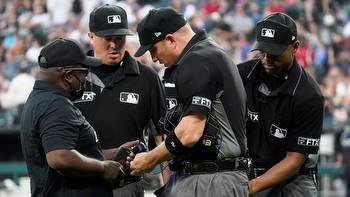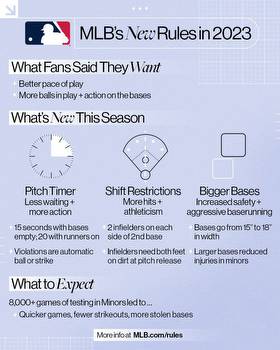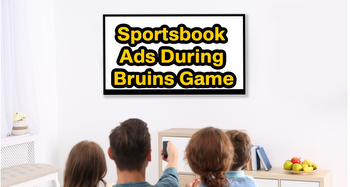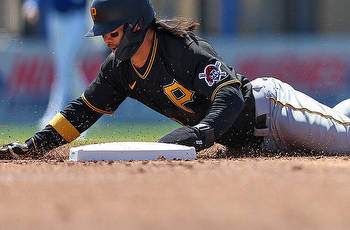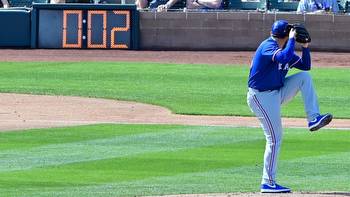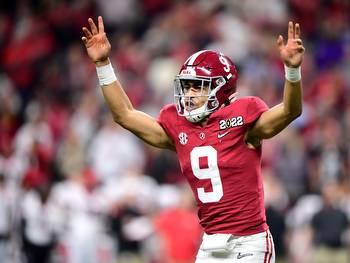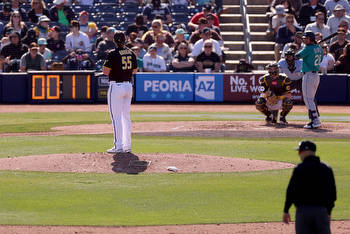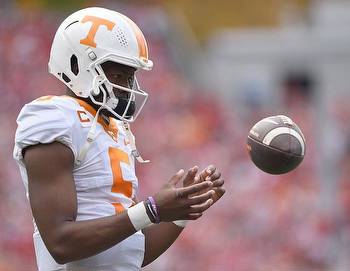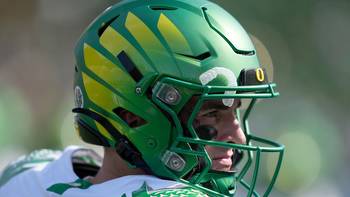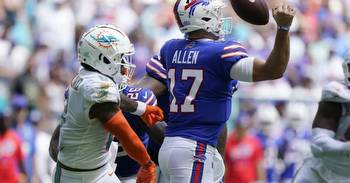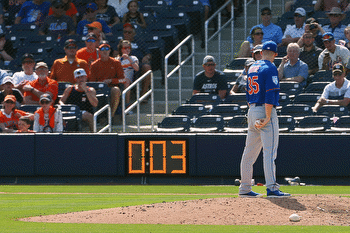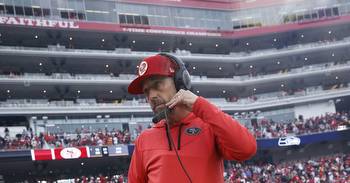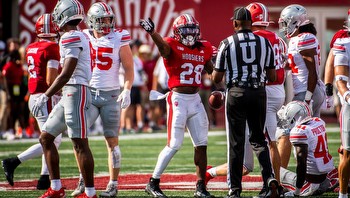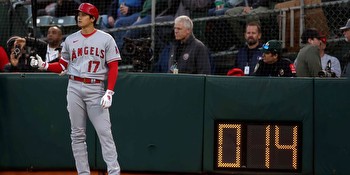Rule Changes Have Robbed Us Of More Football, While Also Making The On-Field Product Worse

Part of the allure of college football is that is has long-been a laboratory for experimentation. From rule changes to innovative schemes, the college game has been fun precisely because you get wildly divergent quality from week to week, in a setting custom-made to maximize scoring, and which inures to the benefit of underdogs.
Well, that used to be the case.
Now, however, the Rules Committee has decided it would much rather adopt NFL rules, at least to the extent that it strategically benefits them. And by strategy we mean “advertiser revenue.”
Case in point: Last season, CFB adopted a running clock that stripped out the stoppage in play after first downs. Ostensibly meant to shorten broadcast times, what we instead have seen is just as many commercials as ever, but without many of the comebacks, late-game excitement, and extra possessions that college football has favored for over half a century.
Did it work? Did it shorten games? Through one month in the season, it had cut half a dozen plays out, and shortened broadcast time by a grand six minutes.
What did they do with all that extra time? Why, they jammed in the same (or more) number of commercials. And with fewer and fewer minutes of on-field action, it threw all those damned ads into sharp relief too. It was so noticeable, that some coaches said the quiet part out loud too: It’s taking away possessions, and we’re only doing this for more commercials:
Did rules work?
Nope. Not at all.
In 2019, the average broadcast length was 3 hours and 24 minutes. In 2022, that had dropped to 3:22 minutes. And, after one month following the destruction of CFB clock rules, last year the broadcast time plummeted to....3 hours and 16 minutes. Interestingly, no hard data has been released after that end-of-September report, likely because it had received so much pushback from fans, commenters and coaches.
And while broadcast data is hard to come by, scoring data and snap count is not. And at the end of the year, we had stripped out a whole lot of play, a lot of scoring, while also not significantly shortening broadcast time or penalties.
Let’s go to the tape, and we’ll use 2018 to the present as our timeline, since 2018 is where the datasets mark the beginning of the end of the HUNHS era (and we’ll put a giant asterisk beside 2020).
Scoring:
2018: Median PPG 28.8
2019: Median PPG 28.5
2020: Median PPG among teams playing at least 10 games: 30.1
2021: Median PPG 28.7
2022: Median PPG 28.4
2023: Median PPG 27.2
See that? For half a decade, teams were hitting at or a little over 28 points per contest. After the rule changes, we lost nearly a full field goal per game. When addressing the mean values, not only was that noticeable, it was statistically significant: P = .027 — meaning, that there is a 97.73% chance that this drop in scoring was not a fluke or noise in the data set, rather it was a direct result of rule changes, and you can apportion at least 48.865% of the blame to those rule changes (R-square variance).
Snaps
2018: 895 median snaps per team, 71.6 average snaps per team/game
2019: 881 median snaps per team, 70.46 average snaps per team/game
2020: 770 median snaps per team playing 10+ games, 70.81 average snaps per team/game
2021: 870 median snaps per team, 69.6 average snaps per team/game
2022: 872 median snaps per team, 69.76 average snaps per team/game
2023: 848 median snaps per team, 67.84 average snaps per team/game
Was that drop between 2022 and 2023 significant again? Yup. P. = .0491 — 95% certainty that we’re getting fewer snaps because of rule changes, and again with clock changes responsible for at least half of the reason why.
Is this a mountain out of a molehill? Well you tell me if losing over 5% of the scoreboard output per team, per game is significant. Why don’t you take that kind of pay cut and then tell us how much it matters. Think Alabama would have liked to have two extra points in the Rose Bowl at the end of regulation? Think some of that bumbling would have been cut down with a bit more breathing space after the chains moved?
That’s really what this comes down to, too: you are what the scoreboard says you are. And these rules have minimized the opportunities to demonstrate that.
Yet, even while production is dropping, as things like UCLA’s frantic 2017 4th Quarter comeback would be rendered a nullity, the experience has not gotten better for fans.
They’re sitting in the stadium for just as long, the commercial breaks at home are longer and equally copious. And all we’re really doing is shoveling more obnoxious advertisements on the screen, and keeping fans hostage on scorching seats for just as long. Why? So, Allstate can show one more tree crushing a sedan in the suburbs.
It’s a miserable experience now, one that has chased me and many others away from stadiums. They’ve made the home viewing experience worse, while also making the on-field product worse. Hoorah?
And we’re not done yet either; oh, no, they’re not done monkeying with the clock either. This year, they’ve proposed another change, this time to the two-minute warning system, that will further homogenize the college and pro experience:
Right now, the specific way that commercial breaks occur during a college football game depends on the conference and broadcaster. Broadcasting partners either use a “3-4-3-4” strategy (three breaks in the first and third quarters, four in the second and fourth quarters) or a “4-4-4-4” strategy that includes breaks at the end of the first and third quarters. Some conferences would also let networks run “30-second floaters” during game stoppages.
The new recommendation “synchronizes all timing rules, such as 10-second runoffs and stopping the clock when a first down is gained in bounds, which coincides with the two-minute timeout.”
“The two-minute timeout will allow all end-of-half and end-of-game timing rules to be simplified and synch up with this timeout,” said Steve Shaw, NCAA secretary-rules editor. “This will also help broadcast partners to avoid back-to-back media timeouts.”
The proposals still need to be approved by the Playing Rules Oversight Panel, which is expected to happen. They will convene in April.
While the proposed change could potentially prevent some back-to-back media timeouts, which would lessen the annoyance for viewers, it’s unlikely to have too much of an impact on the length of a game broadcast. If you already think college football broadcasts are too long, don’t expect any change here.
If anything, it will align your viewing experience with the NFL, where viewers are very accustomed to the two-minute warning at this point. However, not everyone sees that as a good thing.
So, what does the immediate future hold? If the half-decade trend holds true, and there’s no reason to suspect it won’t, we’re going to get games with fewer snaps, fewer possessions, less scoring, with just as many commercials as ever...and without appreciably cutting down on the broadcast time.
The shortening of on-field action and decreased scoring has been exacerbated by a modern trend in bend-don’t-break defenses that has exposed poor quarterback play, even as the players’ patience for long-term development has waned. Before these rules changes college football was already a breaking (sometimes broken) mess. Reducing the number of live-game snaps they see is apt to only make that more true, not less so.
And the worst part is that, like so many other destructive acts of late in CFB, this was entirely unnecessary.
Scoring was already dropping, game times were already falling. This was a problem the sport was correcting organically; there were no “foreign monsters to slay,” so to speak.
If you want shorter broadcasts with as many or more commercials, just say as much.
But don’t piss down my leg and tell me it’s raining. I’m stepping in your foul yellow puddles enough.
53%
Love ‘em, they’re perfect.
(232 votes)
1%
Like ‘em, but we still need to make games shorter
(5 votes)
4%
Didn’t really notice them
(19 votes)
38%
Loathe ‘em; stop screwing with college football
(168 votes)







